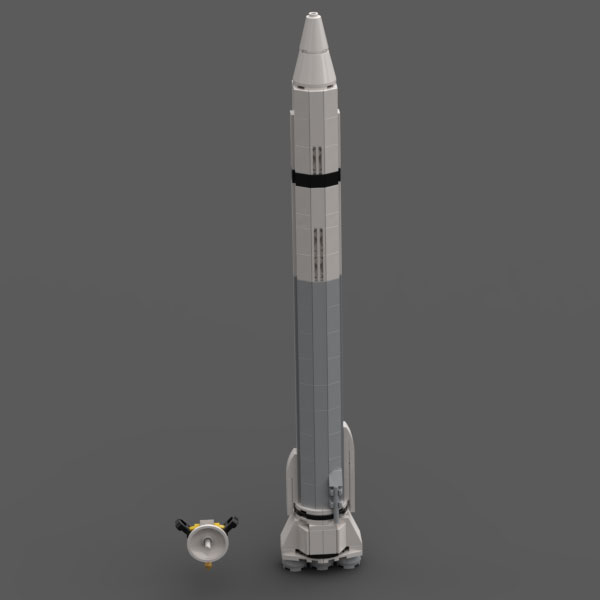
LEGO Designer:
Sebastian Schön (MoppeW40k)
Designed:
April 2018
Categories:
Launch Vehicles, All, Medium Lift Launch Vehicle, Space Agency - NASA
Launch Vehicle Details
Stages:
Length:
Diameter:
Mass at Launch:
Low Earth Orbit Capacity:
Total Thrust:
Apogee:
Class:
Centaur was the first rocket stage to utilize liquid hydrogen (LH2) and liquid oxygen (LOX) as propellants. Despite high performance, LH2 had to be chilled at extremely low temperatures (lower than LOX) and its low density meant that large fuel tanks were needed.
The first attempt at using an LH2/LOX-fueled engine was the Air Force’s top-secret Lockheed CL-400 Suntan reconnaissance aircraft program in the mid-1950s. The progress made during the aborted venture was picked up by Convair and others for rocket stage use. Originally, Centaur was conceived of as a purely experimental project to develop an experience for larger, more powerful rocket stages so as not to distract Convair’s focus on the all-important SM-65 Atlas missile program.
Convair developed a specially-enhanced version of the Atlas D vehicle for mating with Centaur stages; the Atlas was equipped with an uprated propulsion system, the MA-5, which had twin turbopumps on each booster engine, and the structure reinforced for the large upper stage, along with elongated fuel tanks. Centaur development was made somewhat difficult by the insistence on modifying Atlas components rather than developing totally new ones. This was done for time and budget reasons and because it allowed the Centaur to be manufactured on the existing Atlas assembly line at Convair. The engines were manufactured by Pratt and Whitney. There were considerable difficulties integrating the two vehicles, especially because Atlas-Centaur would be almost 30% longer than an Atlas ICBM and there were doubts as to its aerodynamic stability in flight.
Downloads
Part count: 269 bricks, 55 lots.
| Unit | width | length | height |
|---|---|---|---|
| Studs | 4.2 | 6.0 | 42.6 |
| Inches | 1.3 | 1.9 | 13.4 |
| Centimetres | 3.4 | 4.8 | 34.1 |
No external URL provided.
Launch History information from space.skyrocket.de
Launch History information from space.skyrocket.de
Related Posts
None found

